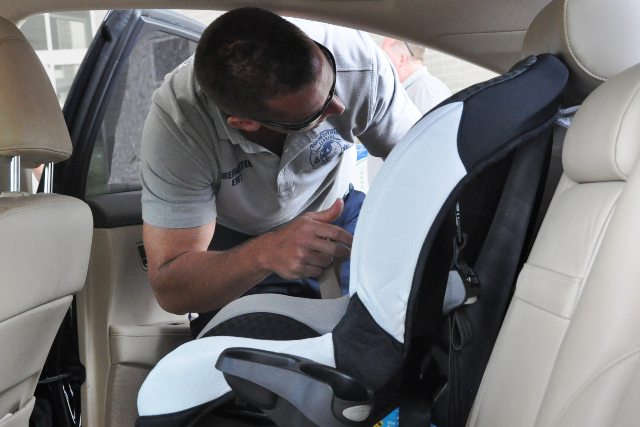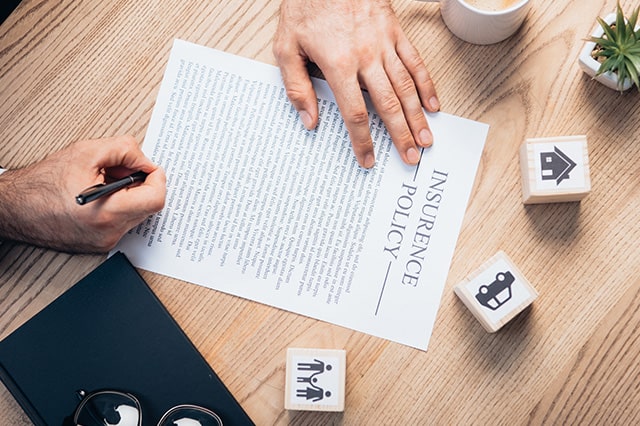
How to Read a Car Accident Report: A Guide from Sabbeth Law






Understanding Car Accident Reports, Its Contents and Importance
Car accident reports play a crucial role when dealing with claims and legal proceedings in Vermont and New Hampshire. Navigating these reports can be daunting due to their complex codes and terminology. Understanding the basics of a car accident report empowers victims and their loved ones to comprehend their rights effectively.
Evaluating the details within the report is vital for determining fault and liability. Whether assessing the narrative provided by the investigating officer or deciphering the technical jargon, each piece of information can significantly impact the outcome of an insurance claim or court case.
At Sabbeth Law, we recognize that many individuals find these documents overwhelming, and we strive to assist our clients in breaking down and comprehending their reports. By shedding light on these complexities, we help individuals in Vermont and New Hampshire build stronger, more informed cases.

Why You Need to Understand Your Accident Report
Accident reports might seem like a jumble of technical terms and codes. Yet, comprehending these details can significantly impact the resolution of your car accident case. Each section of the report provides crucial data that may influence insurance claims, legal decisions, and even your overall understanding of the event.
Important Details
The accident report includes vital information, such as the location, date, and time of the incident. Officer observations and noted damages help establish the event’s context. Paying attention to these aspects ensures that no piece of evidence that might support your case is missed.
Impacts on Insurance and Legal Outcomes
Inaccurate or misunderstood information can lead to insurance delays or disputes. Misinterpretations could also mean the difference between a successful claim and costly liabilities. Proper awareness can help in effectively navigating potential challenges.
Collaborating with Professionals
For those unsure about deciphering the report, contacting a professional can be invaluable. An experienced Vermont car accident attorney can help clarify confusing terms and offer personalized advice. Consider reaching out to knowledgeable legal professionals like our attorneys at Sabbeth Law.
Remember, taking the time to grasp the accident report isn’t just an exercise in due diligence; it’s a strategy to protect our interests.
Contact UsKey Sections of a Vermont Car Accident Report
Driver and Vehicle Information
This section lists critical details about the drivers, passengers, and vehicles involved in the accident. It includes names, contact information, and vehicle descriptions. Accurate information here is vital for insurance claims and identifying all involved parties.
Date, Time, and Location
These fields provide crucial details on when and where the accident occurred. Precise data helps reconstruct the sequence of events and assess the accident’s context. Law enforcement uses these details to develop a clear timeline of the accident.
Crash Description and Diagram
Officers write a narrative that outlines their observations of the accident. They include a diagram showing vehicle positions, directions, and points of collision. This visual aid is crucial for insurance assessments and understanding the crash dynamics.
Injury and Damage Assessment
This part details any injuries sustained and damage to vehicles, which is crucial for legal and medical follow-up. Officers must accurately record visible injuries and estimate damages, as this information impacts claims and liability.
Witness and Law Enforcement Information
Information about witnesses and the law enforcement officers who attended the scene is listed here. Witness statements can be pivotal in determining fault, and contact details provide a point of reference for further investigation if needed.
Insurance and Reference Numbers
This includes insurance details for the parties involved, which are necessary for claims processing. Reference numbers link this report to other legal documents related to the case, ensuring all records are easily traceable.

Common Codes and Terms
Car accident reports often include various codes and terms that can initially seem confusing. Common codes such as “P” for passenger or “V1” for vehicle one help standardize information across reports. For an exhaustive list of these codes, the Vermont Crash Manual provides detailed definitions.
Many abbreviations and acronyms appear in these reports. For instance, “PD” stands for property damage, while “PDO” indicates property damage only. Understanding these can aid significantly in deciphering report details. The Vermont DMV offers a helpful glossary to assist with these terms.
Key sections in reports often outline road conditions and traffic control features at the time of the accident. Terms like “wet pavement” or “stop sign” provide context for the collision. Posted speed limits are also crucial as they can significantly influence the severity and responsibility of an accident.
Witness statements, whether from eyewitnesses or others, often contain useful information. These statements can highlight contributing factors that may not be apparent from the initial evidence. Therefore, examining this part of the report closely is essential.
Another critical element is the narrative and diagram section, which visually reconstructs the scene. This section, paired with descriptions, aids in understanding the accident’s sequence of events. Analyzing both the written and visual content can provide valuable insights into what occurred.
Contact UsInterpreting Fault Indicators
When reading a car accident report, understanding key fault indicators is crucial. These indicators can determine who is liable and are often found in the narrative section of the report.
- Fault Determination: Often, the report includes a box or section labeled “fault determination.” Here, the officer may state whose actions primarily contributed to the accident.
- Contributory Factors: Specific conditions or actions are noted as contributory factors. These might include speeding, running a red light, or distracted driving.
- Driver Actions: A list of actions, such as failure to signal or improper lane changes, may be included. These provide insight into whether one or multiple drivers acted negligently.
- Liability Assessment: It is vital to explore how each driver’s actions influenced the accident. This can affect insurance claims and potential legal actions.
- Law Enforcement Observations: Officers’ notes on weather, road conditions, and witness statements can be pivotal. Minor details, such as skid marks or vehicle positions, may reveal important liability evidence.
Reports sometimes include additional diagrams or sketches. These visual aids help illustrate vehicle positions and impact points, which are vital for analyzing accident dynamics. Understanding these elements provides a clearer picture of fault.
Misinterpretation can lead to incorrect conclusions about liability. It’s important to carefully review these sections, as they could greatly impact claims and disputes. We should remain objective, relying on factual information presented in the report.

Steps to Take After Reviewing Your Report
After reviewing a car accident report, it’s essential to verify all the details. Ensuring that personal information, vehicle details, and descriptions of the accident are accurate is essential. Mistakes in these areas can affect any potential claims, so it’s advisable to request corrections promptly if inaccuracies are found.
Understanding compensation is a key aspect for accident victims. The first steps should involve assessing medical bills, as these are pivotal in determining the compensation. It’s crucial to gather all medical documents and related expenses for efficient processing of insurance claims.
Communicating with insurance adjusters effectively can make a significant difference. Providing them with concise and accurate information about the accident report helps streamline the claims process. This is where we often clarify any doubts and explain discrepancies regarding the incident.
Exploring your legal rights is often necessary, especially if disputes arise or if the accident report negatively impacts your claim. Consulting with a Vermont car accident lawyer can offer insights and clarify the complexities involved. Consider reaching out to a lawyer at Sabbeth Law to discuss the report further and learn more about what to expect after a car accident.
Navigating these procedures requires attention to detail and proactive measures. By following these steps, you can ensure that you’re well-prepared to handle the aftermath of an accident, focusing on securing your rightful compensation and addressing medical bills effectively.
Contact UsNext Steps with Sabbeth Law
After a car accident, your priority should be understanding your report. Once you have a clear grasp of its details, consider reaching out to us as you navigate legal complexities.
Our team includes experienced personal injury lawyers who are seasoned in cases involving auto accidents. We focus on helping clients interpret the key points of their accident reports and using them effectively in claims.
To move forward, you may want to engage with a car accident lawyer to discuss potential compensation. We are prepared to guide you through this process by analyzing your report and strategizing the best possible approach for your case.
For those needing further assistance, our initial consultations offer an opportunity to review your accident specifics. We discuss your injuries, damages, and what next steps might be necessary.
We believe in close communication throughout the legal process, ensuring you understand your case’s progress. Our role includes not just legal representation but also offering clarity and assurance through each stage.
For a personalized discussion regarding your accident or legal concerns, don’t hesitate to contact Us. We are ready to help you understand your report and explore your legal options.
Practice Areas
Client Testimonials
LUKE PARMENTER“Immediately after my son’s injury at work, he was treated poorly. Over the course of the next few days it became even worse, so I called Mike and he and Crystal have been absolute lifesavers during the process. Mike is not your typical stuffed suit lawyer who only cares about the bottom line he genuinely cares about his clients and his assistant Crystal is beyond amazing! My thanks to you both!”
Client Testimonials
“Immediately after my son’s injury at work, he was treated poorly. Over the course of the next few days it became even worse, so I called Mike and he and Crystal have been absolute lifesavers during the process. Mike is not your typical stuffed suit lawyer who only cares about the bottom line he genuinely cares about his clients and his assistant Crystal is beyond amazing! My thanks to you both!”
LUKE PARMENTER
“I could never ask for a better attorney, to fight for me, to believe in me, and have faith in me, than what I found in Mike Sabbeth, He doesn’t treat you like a client, he treats you as if you are one of his own family members, He will fight for you, with all he has, and is ALWAYS up front and honest with you about everything!”
SANDRA DRUGE
